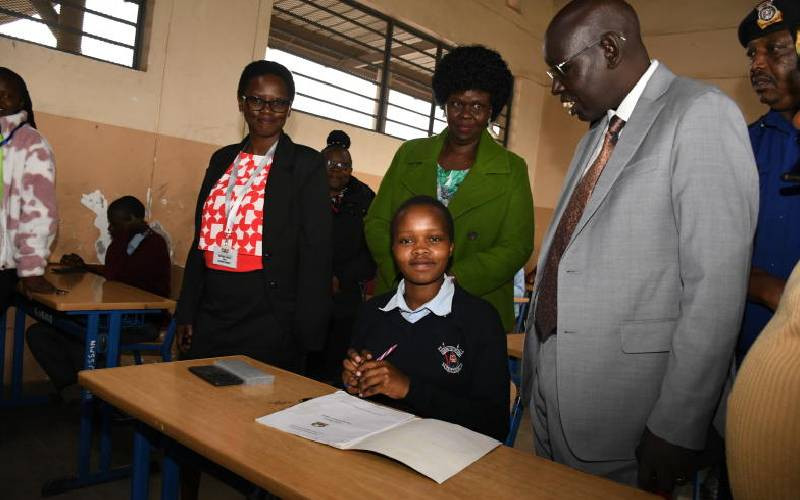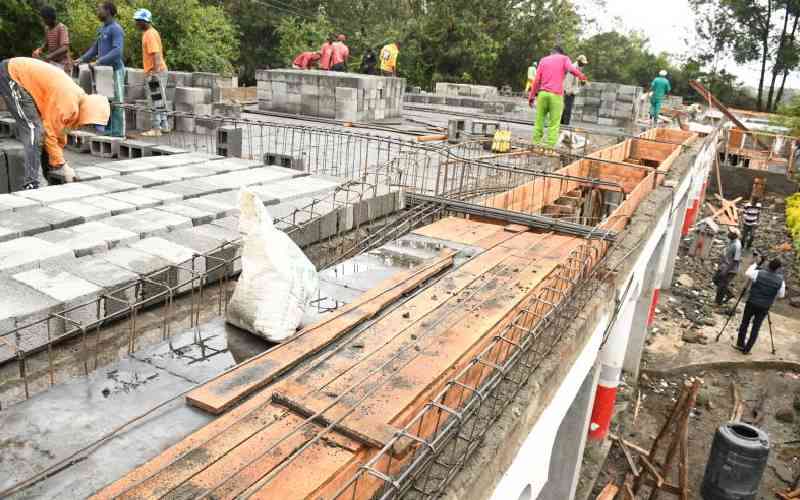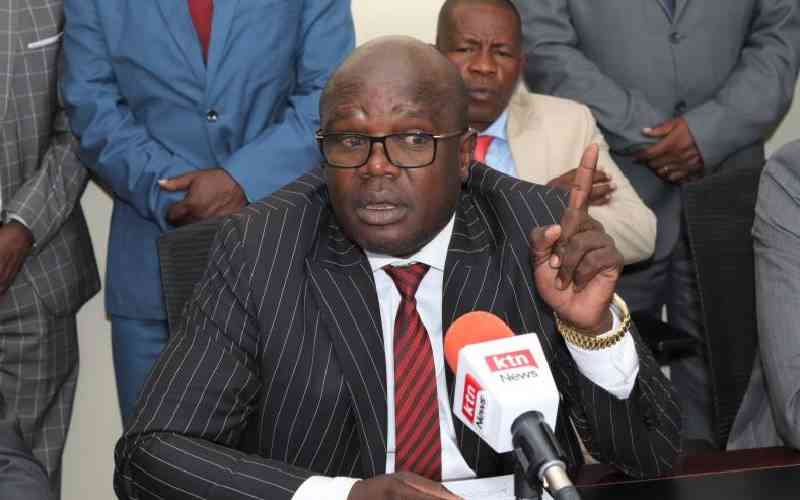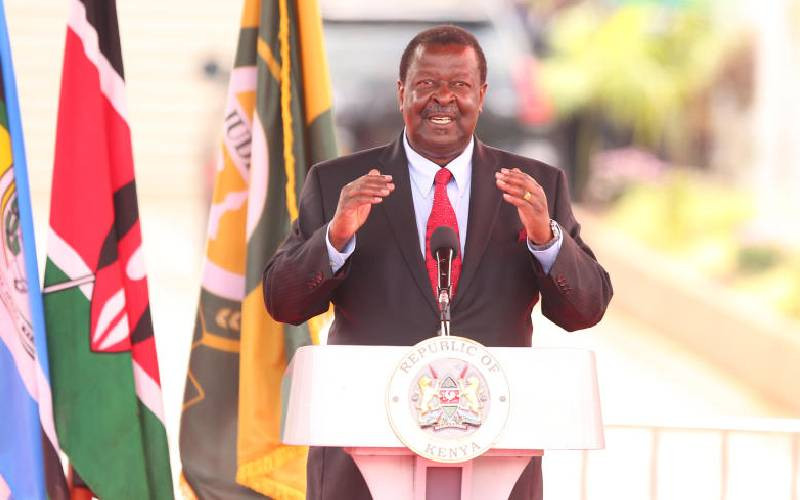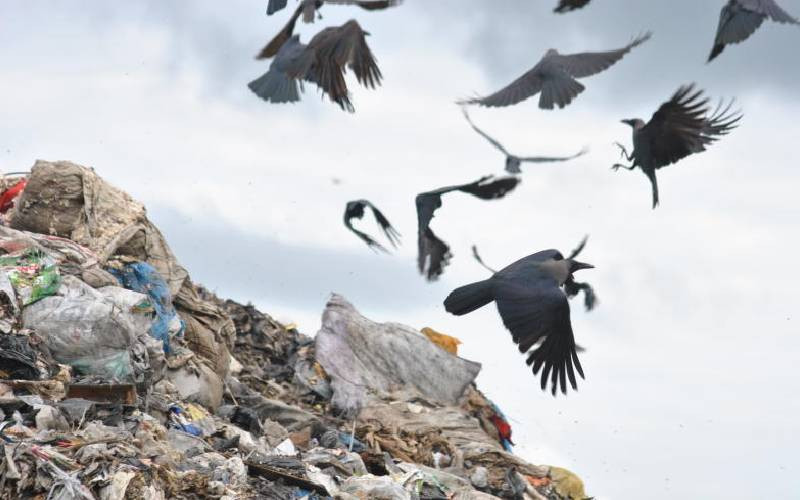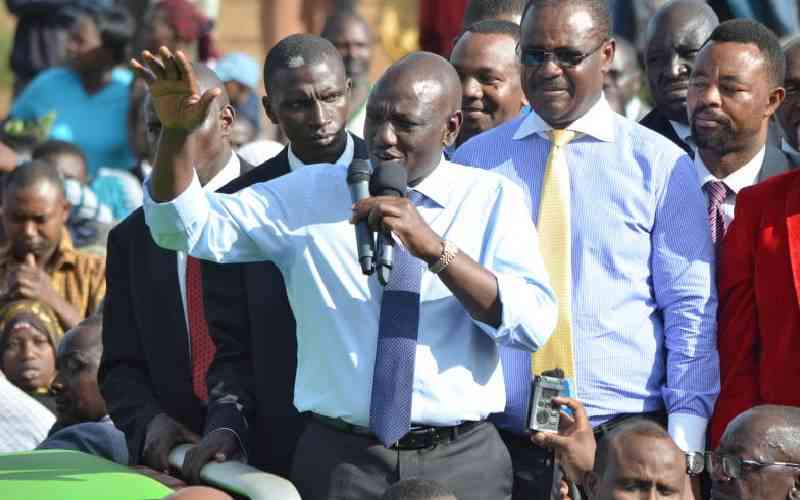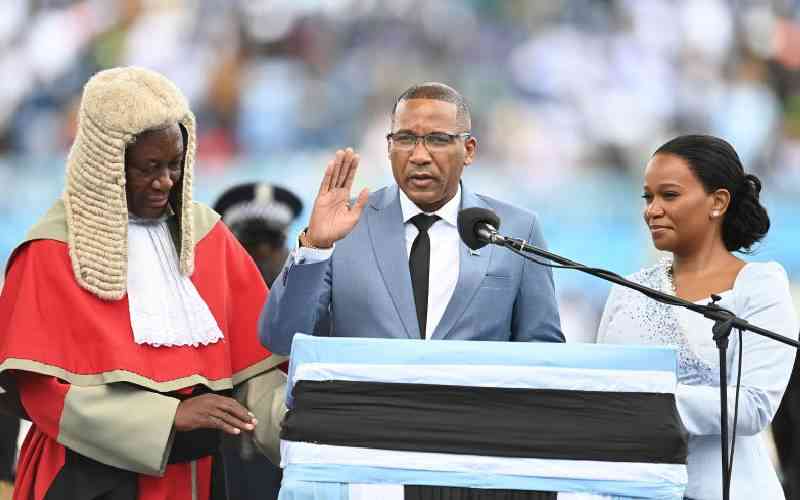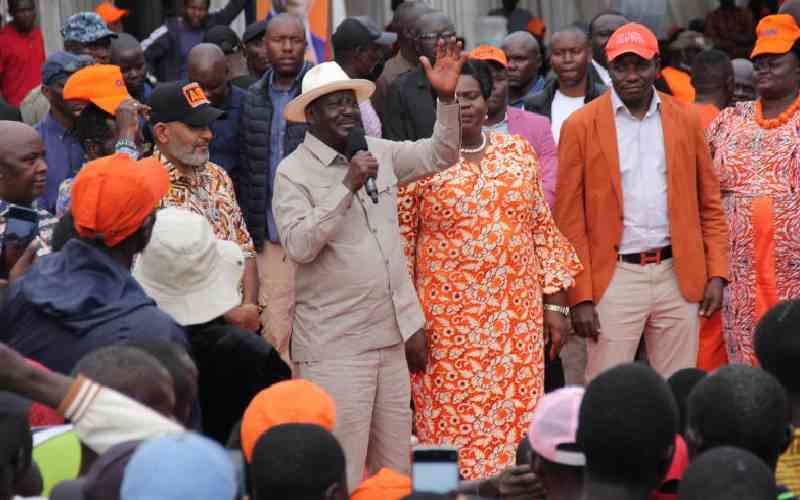
The three-billion-shilling barrier between Kenya and Somalia in Mandera County has been partially vandalised.
Locals say some residents from Bulla Hawa town pulled down sections of the barbed wire wall constructed by the Kenya Defence Forces (KDF) personnel.
The poles erected in the phase one project, which started from Border Point One in Mandera County and covered a 10-kilometre stretch are said to have been purloined and transported using donkey carts which were also used to ferry the barbed and the chain-link wire.
This has caused delays in the government's initial plans of securing the border from Mandera to Kiunga in Lamu County to keep Al-Shabab militants in Somalia from crossing over to Kenya.
Mandera East MP Hussein Abdirahman said there is a need for the government to rework the vandalised area to fast-track reopening of the border that has remained closed since 2012.
"I call on the government to restore the security wall because it was meant to curb criminal activities across the border," he said.
On Sunday KDF's Strategic Communications confirmed that the project that is to cover 700kms has encountered numerous challenges which have adversely affected and delayed the initial plans, adding that they have come up with a new strategy to fast-track the project to its completion during this financial year.
Some of the challenges include vandalism of beacons which has resulted in border boundary disputes which have led to the suspension of works in selected areas.
There have been cases of Improvised Explosive Devices attacks and other threats that have led to the loss of lives for both security and contractors including the destruction of construction equipment.
Reports from the department also cite occasional stand-off of security forces along the border area and involvement of women including children in the physical destruction of the constructed wall.
It further states that the covered area had reduced the frequency of Al Shabab attacks, especially in Mandera, inter-clan conflicts arising from scarcity of resources such as livestock watering points and continued legitimization of trade border patrols and illegal cut lines closed.
Abdi Hassan who is a resident of Border Point One said Somali nationals began vandalising the fence end of 2020 following a suspected fugitive who crossed over and hid in Mandera.
Thereafter residents across the border stripped the wire from the poles and ferried it away on donkey carts.
"They came with donkey carts and collected all the uprooted poles in my neighbourhood, actually under the watch of security personnel," said Hassan.
It is not clear which security sector he was talking about but, the General Service Unit camp is located near the vandalised wall towards Border Point One.
The vandalised poles are being used to fence residential plots in Bula Hawa, a town that was initially separated from Mandera by the Kenyan barbed wire fence, while those recovered by security forces are being kept at the Mandera Police Station.
The now-open border has seen hundreds of children from Bulla Hawa seek education and health services from the neighbouring Mandera town due to the unstable Somalia government.
People from both sides of the border are seen crossing over freely, some with their livestock and others having wives and families in Bulla Hawa and Mandera towns respectively.
The fence has been helpful to the farmers who had their farms along the borderline as theft cases from across the border had reduced but now they have to feel the pinch and spend the nights on their farms to safeguard their farm produce from thieves.
The glaring project's underperformance between 2017-2921 has forced the KDF to develop a new concept for the implementation strategy.
The new strategy to be implemented during this financial year brings forth best practices borrowed from Pakistan, Egypt and the USA where a team of KDF personnel visited for benchmarking purposes.
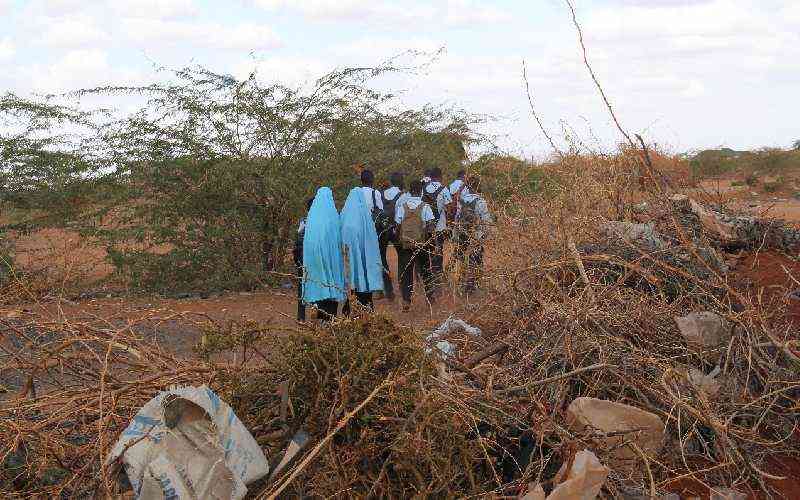
This will include the construction of forts, posts/outposts and surveillance &intrusion detection system along the wall.
Plans to construct the security border wall came in response to the terrorist attack on Garissa university that claimed more than 140 lives.
The project was launched on March 25, 2015.
KDF with the help of NYS personnel was in charge of the construction of the entire project before the entire 360 Mandera stretch was awarded to local contractors who worked under military supervision.
In 2018, some organized angry demonstrators protested against the construction of the wall saying they were seriously affected because businesses and education activities in Somalia's Bulla Hawa had come to a standstill.
For efficient and timely execution, the 700Km the project was divided into three sectors- the Northern Sector (Mandera to Elwak 160KM), Central Sector (Elwak to Libat 445KM), Southern Sector (Libat to Kiunga 105 KM)
Phase 1 of the project involved the construction of patrol roads, border fence and side ditch excavation along the Northern and Southern sectors.
Phase 2 involved patrol roads and the installation of tech-enhanced surveillance systems along the central sector.
 The Standard Group Plc is a multi-media organization with investments in media platforms spanning newspaper print
operations, television, radio broadcasting, digital and online services. The Standard Group is recognized as a
leading multi-media house in Kenya with a key influence in matters of national and international interest.
The Standard Group Plc is a multi-media organization with investments in media platforms spanning newspaper print
operations, television, radio broadcasting, digital and online services. The Standard Group is recognized as a
leading multi-media house in Kenya with a key influence in matters of national and international interest.

